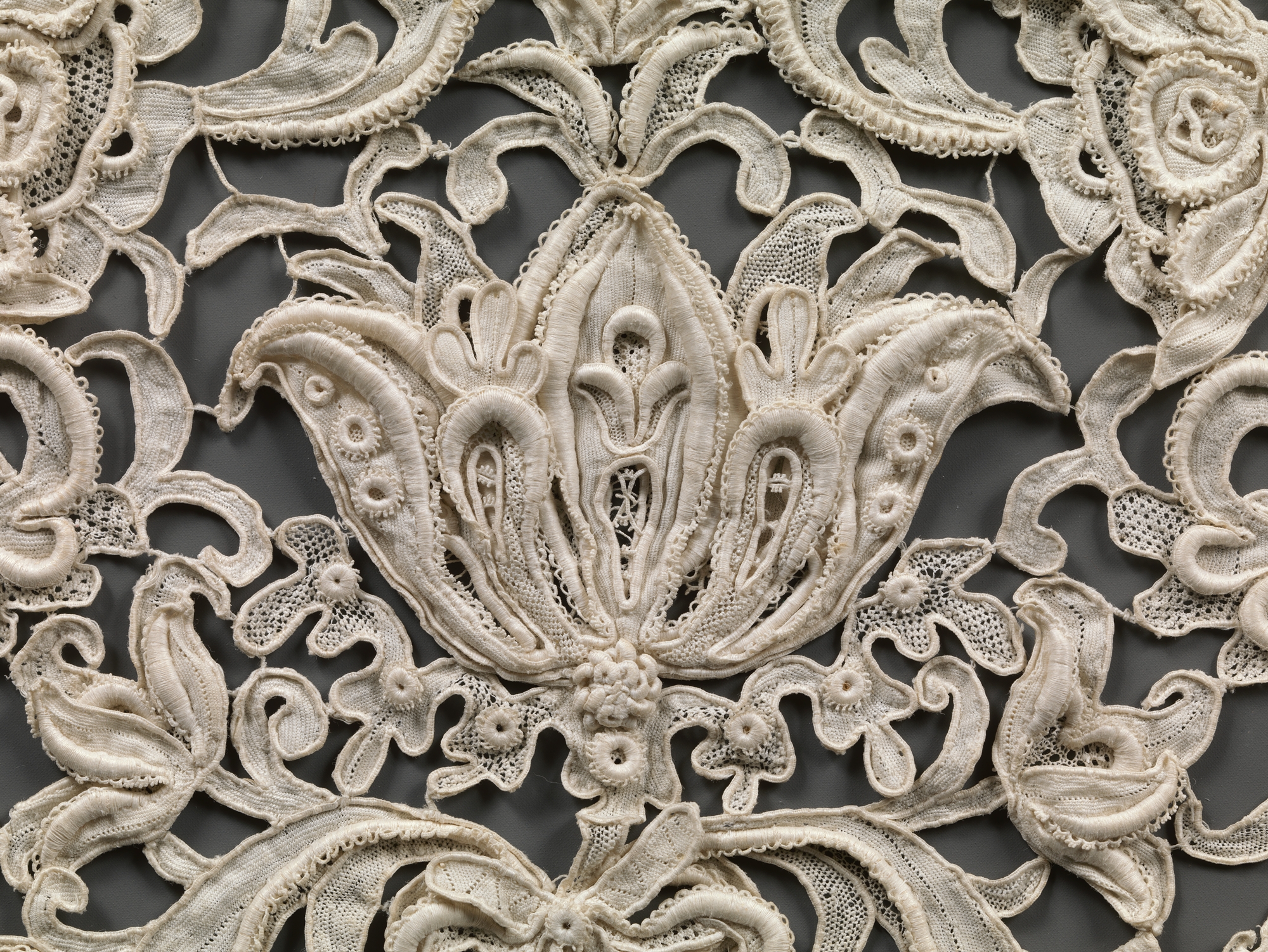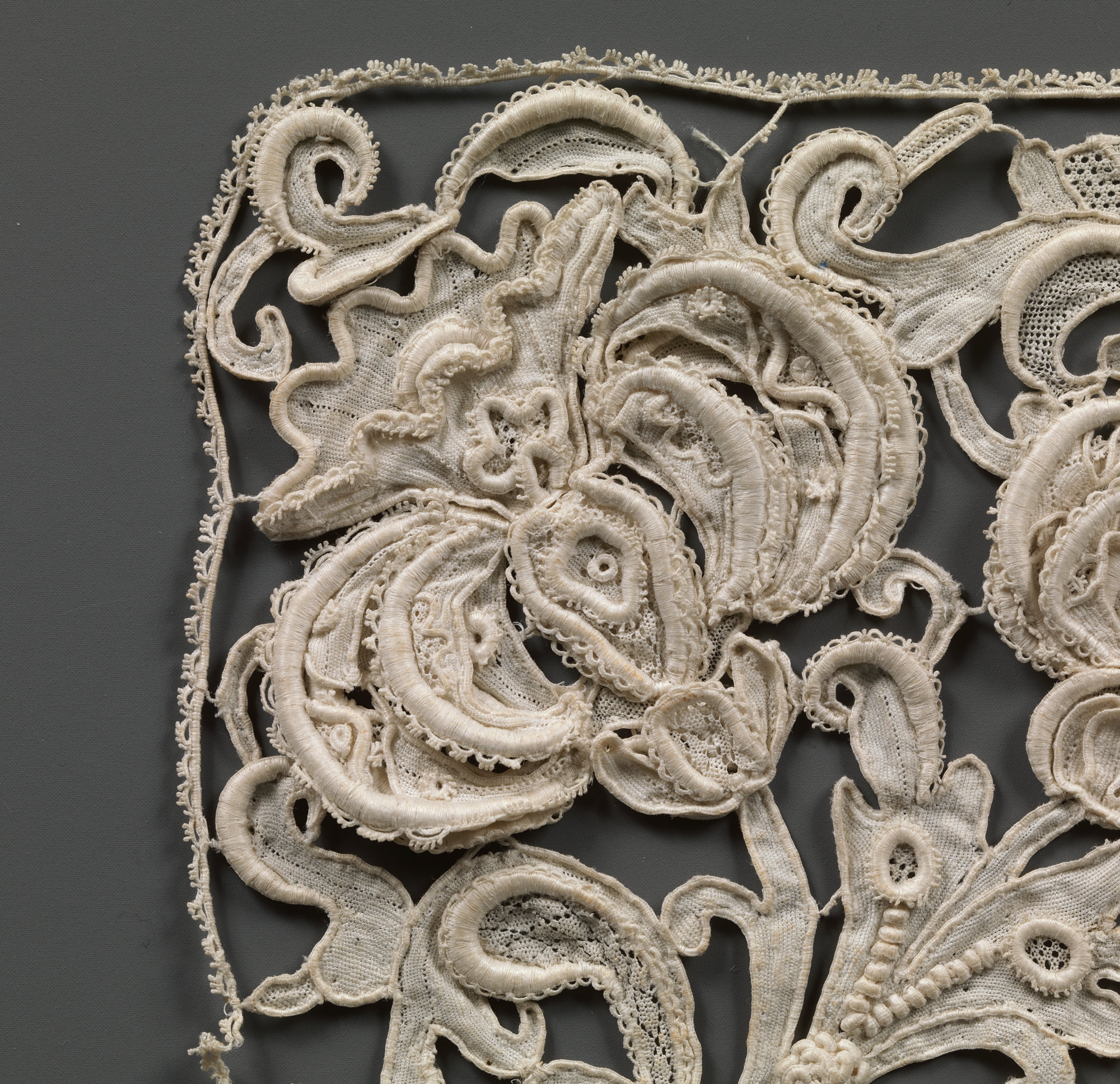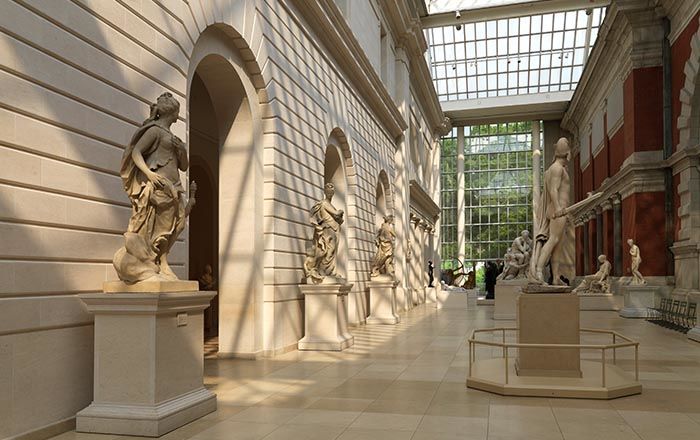Cravat
Not on view
Venetian gros point needle lace, characterized by bold patterns that combined heavily padded outlines and delicate filling stitches, first became popular in the mid-seventeenth century. In late nineteenthcentury Austria, a number of lace schools were established under the patronage of Empress Elizabeth. One of these, the K. K. Zentral- Spitzenkurs, or Central Lace Exchange of Vienna, became known for its copies of Venetian gros point that incorporated partially detached elements, an innovation that augmented the threedimensional effect. This border contains elements in the style of Josef Storck, head designer at the Zentral-Spitzenkurs.
This image cannot be enlarged, viewed at full screen, or downloaded.
This artwork is meant to be viewed from right to left. Scroll left to view more.





